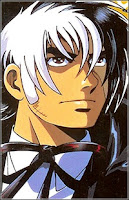It’s time for Experiments in Manga’s monthly manga giveaway! This month you can enter for a chance to win a brand new copy of the first volume of Yuji Iwahara’s King of Thorn as was published by Tokyopop. The contest is open world-wide, so I hope you’ll take the opportunity to enter!
I was probably in middle school, or maybe even younger, when I first became interested in survival stories. I have yet to grow out of that particular fondness which is why manga like King of Thorn, where the characters’ struggle to survive is an important part of the plot, appeal to me. Survival stories can be found in just about any genre or flavor. You have survival “games” in manga like Koushun Takami and Masayuki Taguchi’s Battle Royale in which characters face off against each other for the right to live. In manga like Dragon Head, by Mochizuki Minetaro, characters struggle not only against each other but against apocalyptic and catastrophic conditions. Characters pit themselves against nature itself in manga like Baku Yumemakura and Jiro Taniguichi’s The Summit of the Gods. But no matter what the genre, they do what it takes to survive. It can be both terrifying and inspiring.
So, you may be wondering, how can you win King of Thorn, Volume 1?
1) In the comments below, tell me about your favorite survival manga. If you don’t have one, you can just mention that.
2) To earn a second entry in the giveaway, simply name a survival manga that hasn’t been mentioned yet by me or by someone else.
3) If you’re on Twitter, you can earn a bonus entry by tweeting about the contest. Make sure to include a link to this post and @PhoenixTerran (that’s me).
So that’s it! Each person can earn up to three entries for this giveaway. You have one week to submit your comments. If you have trouble leaving comments, or if you would prefer, you can e-mail me your entries at phoenixterran(at)gmail(dot)com. I’ll then post the comments in your name. The winner will be announced and randomly selected on March 7, 2012.
VERY IMPORTANT: Include some way that I can contact you. This can be an e-mail address, link to your website, Twitter username, or whatever. If I can’t figure out how to get a hold of you and you win, I’ll just draw another name.
Contest winner announced—Manga Giveaway: King of Thorn for Keeps Winner












